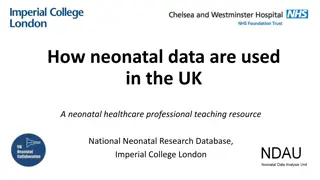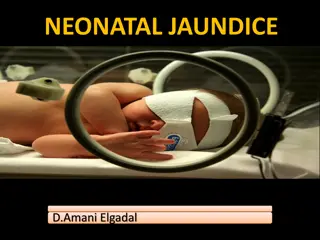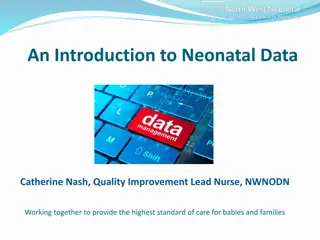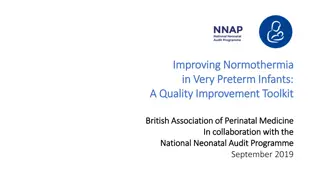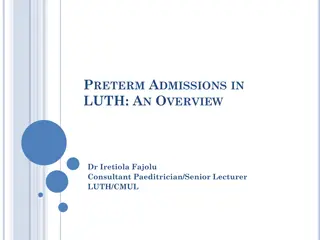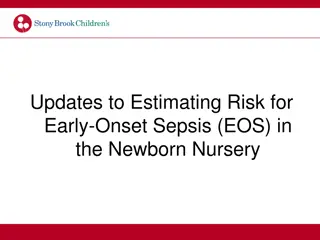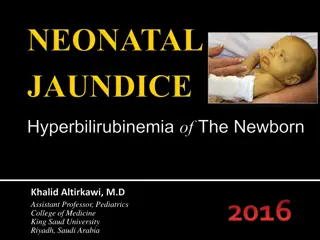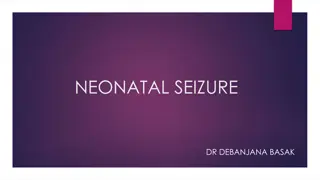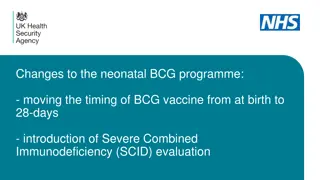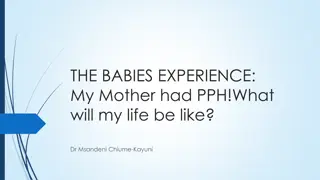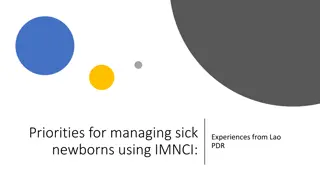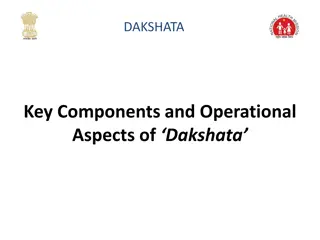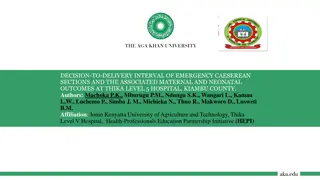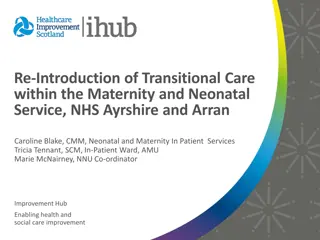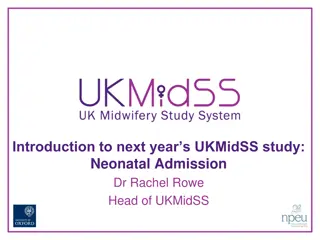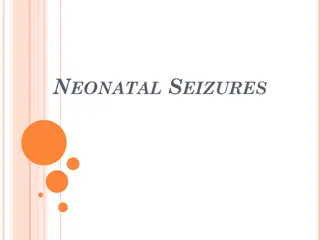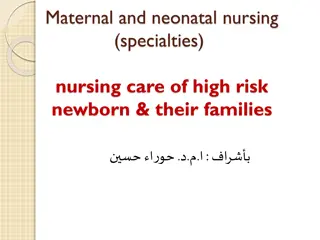Understanding the Neonatal Period: Care and Evaluation
The neonatal period, also known as the newborn stage, encompasses the first 28 days of a baby’s life, characterized by rapid changes and fragility. This crucial stage requires specialized care, with sub-divisions such as the Period of the Partunate and Period of the Neonate. Commonly, neonates may require treatment in a neonatal intensive care unit. General measurements indicate that newborns weigh around 7 pounds and are approximately 20 inches long. This period is defined from birth until the navel heals, emphasizing the delicate nature of neonatal care.
Download Presentation

Please find below an Image/Link to download the presentation.
The content on the website is provided AS IS for your information and personal use only. It may not be sold, licensed, or shared on other websites without obtaining consent from the author. Download presentation by click this link. If you encounter any issues during the download, it is possible that the publisher has removed the file from their server.
E N D
Presentation Transcript
NEONATAL, EVALUATION & CARE B.A 5th Semester Presented by Rimush Narzary Asstt. Professor Bengtol College
What is the neonatal period? The period right after birth is called the Neonatal period or the period of the Newborn.
What is the neonatal period? The neonatal period is the first 28 days or the first 4 weeks of a baby s life no matter whether they came early, late, or right on their expected due date. A neonate is also called a newborn. It is a time when changes are very rapid. Neonatal describes the first month of a person's life. The neonatal period is that first month after a baby is born.
What is the neonatal period? Literary the term Neonate is derived from the Greek word Neos meaning new and the Latin verb Nascular meaning born. According to medical criteria the neonatal periods begins with birth and ends when the navel heals..
Neo comes from Greek which means new and natal comes word natus which born. Neonatal means newborn. from means the Latin be to The neonatal stage is the first month of life, when a baby is tiniest and most fragile. Babies born at a hospital who can t come home right away sometimes stay in a neonatal intensive care unit, where neonatal nurses care for them. A neonate is also called a newborn.docx
The neonatal stage is sub-divided into two periods- 1. Period of the Partunate: (From birth to fifteen to thirty minutes after birth) This period begins when the baby has emerged from the mother s body and lasts until the umbilical cord has been cut.
The neonatal stage is sub-divided into two periods- 1. Period of the Neonate: (From the cutting the umbilical cord to approximately the end of the second week of post-natal life) The infant is now a separate, independent individual and is no longer a parasite.
General Measurements... On average, the newborn infant weighs 7 pounds and is 20 inches long. s 7 pounds and is 20 inches long. Weight range - 2500 - 4000 gms (5 lbs. 8oz. - 8 lbs. 13 oz.) Length range - 48 to 53 cms (19 - 21 inches) Head circumference - 33 to 35 cm Expected findings: Head should be 2 to 3 cms larger than chest Chest circumference - 30.5 to 33 cm.
Some complications that can appear during the neonatal period include: birth defects nutrition problems birth injuries low blood sugar neurological problems Jaundice weight loss
Jaundice... Jaundice is a yellow discoloring of the skin, mucous membranes, and eyes, caused by too much bilirubin (a breakdown product of hemoglobin made by the liver) in the blood. High levels of bilirubin circulating in the blood stream dissolve in the subcutaneous fat (the layer of fat just beneath the skin), causing a yellowish appearance of the skin and the whites of the eyes. In newborns, jaundice often exists due to an immature liver. Using bili lights is a therapeutic procedure performed on newborns to reduce elevated levels of bilirubin, which tends to accumulate in the brain tissue, and can cause permanent brain damage. The bili lights, like sunlight, allow the body to manufacture Vitamin D.
Tonic Neck Reflex... When your baby's head is turned to one side, the arm on that side stretches out and the opposite arm bends up at the elbow. This is often called "fencing." Baby's may sleep in this position for years, but when awake, this reflex usually disappears by the age of 4 months.
Grasp Reflex... Palmer Grasp reflex put something against baby s palm and they grip fingers and hold it Plantar Grasp reflex put something on sole of baby s foot; they clench their toes in an effort to hold it
Step Reflex... The stepping or walking reflex is present at birth. If the infant is held erect and the feet come in contact with a surface, the infant will make step-like movements. Some parents incorrectly interpret this movement as a desire to stand and walk. It is important that this motion is not allowed to be weight-bearing, as leg muscles are not developed. It is interesting that this reflex occurs even if the baby is held upside down and the feet come in contact with asurface
Crawl Reflex... When your baby is placed on his/her stomach, they will automatically assume a "crawling" position. This usually disappears by 4 months. When the position reappears, it is closer to 6 10 months. At that point the baby will actually be learning to crawl rather than just exhibiting a reflex movement.
Sucking Reflex.. This reflex will allow the infant to ingest food from the nipple of a bottle or breast. As shown in the picture above, this reflex occurs when any nipple-sized object is placed on the baby s lips. The sucking reflex may have been present long before birth, as shown above in this fetus.
Blink reflex... The infants eyes will open and close in response to a touch on the face, a bright light, a loud sound, a strong odor, or a bitter taste. This reflex serves to help protect the eyes, and is present during the entire lifetime.
Bonding... When experts talk about bonding, they're referring to the intense attachment the parent develops with the baby, in particular the mother, due to the biological connection. Some of the experts believe bonding must happen immediately after birth, but most believe it is truly an individual experience. It should be considered a process rather than a specific moment, involving cuddling, holding, talking to, etc.
Father-Newborn Bonding Most of the bonding research has focused on mother-infant bonding, but in recent years father- infant bonding has received increased attention. A special term is used to describe the father- infant relationship at birth--"engrossment." Engrossment involves the holding and comforting of the baby and the display of a greater level of sensitivity in the father.
THE END THANK YOU


